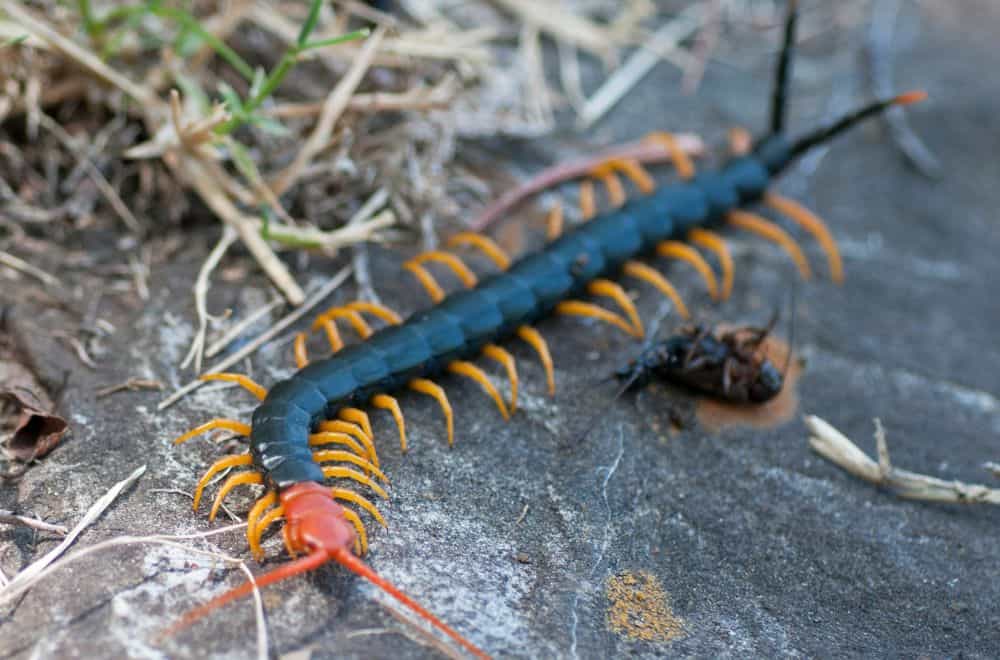Giant centipedes are horrifying creatures to look at, and as if their appearance alone wasn’t enough to give you nightmares, they are also capable of delivering an agonizing bite to anyone who comes too close.
This makes them a type of bug you’ll want to avoid – and to help you know what to look out for, in this post, we introduce the world’s most dangerous centipedes.
Most Dangerous Centipedes – an overview
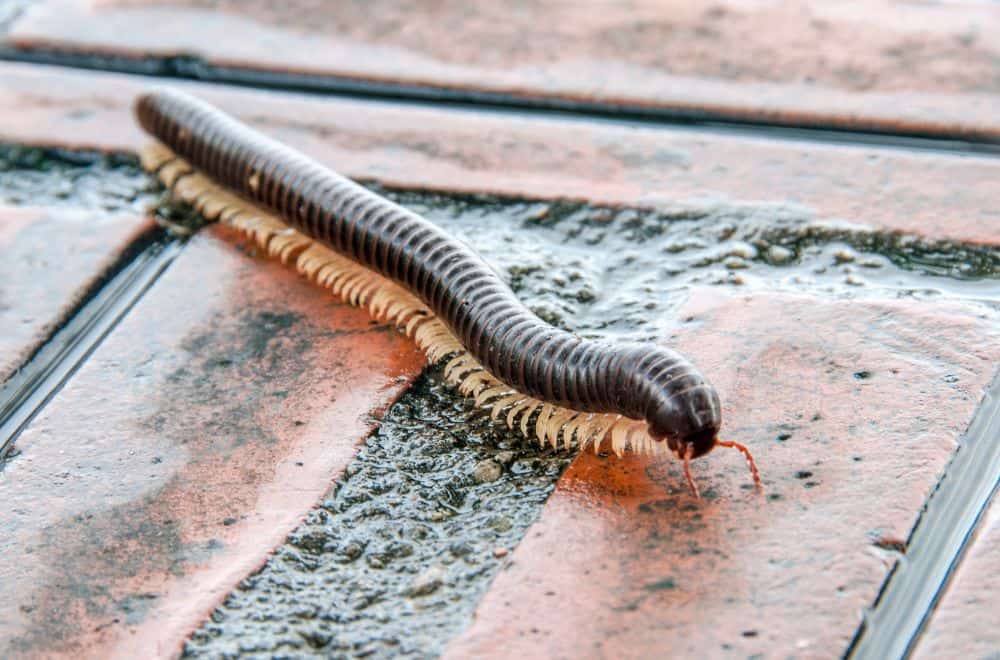
Before we look at the most dangerous species of centipede, let’s start by giving a brief overview of these many-legged horrors.
Around 3,000 species of centipede have been described by science, but it is thought that there are up to around 8,000 in total.
Centipedes are found all over the world and even inhabit regions north of the Arctic Circle. They are common in all kinds of environments, from tropical rainforests to deserts.
All centipedes are venomous and all are carnivorous, using their bites to paralyze their victims as well as for defense.
However, while some of the bigger species can give humans an incredibly painful bite, other species are too small to even pierce our skin and so are considered harmless.
An interesting fact about centipedes is that they don’t have what’s known as a waxy cuticle, a layer that helps insects and arachnids retain water.
For this reason, they lose water quickly, and this is why most species are found in moist environments or close to water in places like under leaves, in the soil, under stones or dead wood and in logs.
The most dangerous centipedes in the world
While there are thousands of species of centipedes in the world, and plenty of them are more than capable of delivering a nasty bite, many of them are largely unknown to science, and the potency of their venom is largely undocumented.
Having said that, some species are well known, and since they often come into contact with humans, the effects of their bites are also more familiar.
This means that while there may well be some even more terrifying species out there, here are the species that are most likely to bite humans, making them the most dangerous centipedes in the world.
1. Scolopendra gigantea
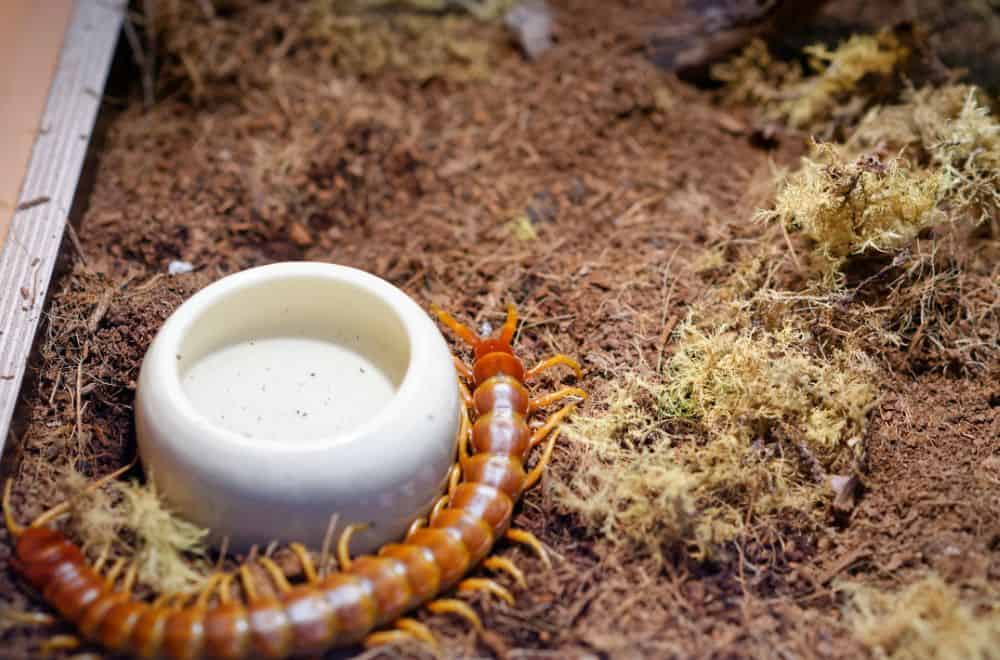
Also known as the Peruvian giant yellow-leg centipede or Amazonian giant centipede, this monster is the largest centipede on Earth.
It is found throughout northern South America and the southernmost parts of the Caribbean and can grow up to a foot or more in length.
It feeds on any small animals it can catch, including insects, spiders, millipedes, scorpions and even tarantulas along with lizards, frogs, snakes, small birds, mice and bats.
Unsurprisingly, these creatures are among the most dangerous of centipedes – but while their bites can be excruciating, they are rarely fatal.
That said, it is thought that a four-year-old girl from Venezuela died after receiving a bite from one of these centipedes after it emerged from a soda can she was about to drink from.
However, this is thought to be the only confirmed case of a fatality caused by Scolopendra gigantea.
2. Scolopendra subspinipes
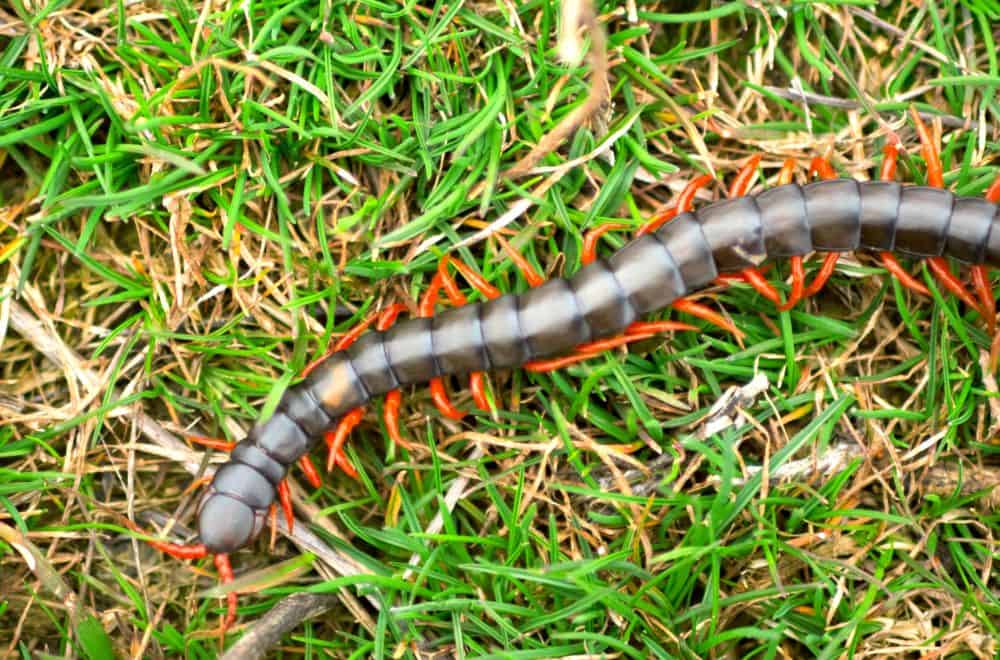
Many of the most venomous centipedes belong to the Scolopendra genus, and another that rivals Scolopendra gigantea in terms of possessing a fearsome bite is Scolopendra subspinipes.
This centipede is also by names such as the jungle centipede, orange-legged centipede, Hawaiian centipede and Vietnamese centipede.
It has a wide range and is present all around the Indian Ocean and all of tropical and subtropical Asia from Russia to the islands of Malaysia and Indonesia as well as Australia.
It is also present in South and Central America, the Caribbean and the US, although this may be because it has been introduced there as an invasive species.
Growing to a maximum of almost eight inches, it is a little smaller than Scolopendra gigantea, but it still packs a dangerous bite.
Its usual diet includes spiders and scorpions as well as mice and small reptiles.
It is also thought to be responsible for at least one human death, that of a seven-year-old girl who was bitten on the head by one in the Philippines.
This centipede is well known in Hawaii, where it commonly bites hikers. However, although the bites are considered excruciatingly painful, when rare deaths occur, they are attributed to anaphylaxis or secondary infection rather than directly to the venom of the centipede.
At the same time, some who have been bitten by this centipede have suffered from severe difficulty in breathing or kidney damage, occasionally bringing them close to death.
3. Scolopendra subspinipes mutilans
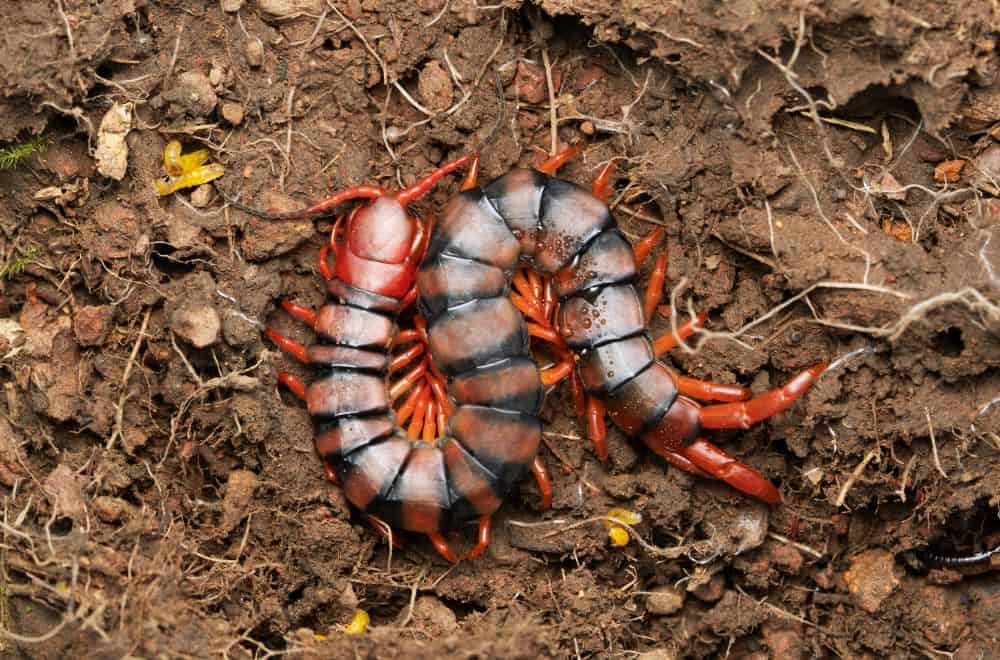
A sub-species of Scolopendra subspinipes or possibly a separate species, Scolopendra subspinipes mutilans is commonly referred to as the Chinese red-headed centipede and is found in East Asia and Australasia.
They grow to around eight inches in length and are identified by a distinctive red head and black body.
A bite from one of these centipedes is considered extremely painful and causes a burning sensation around the location of the bite.
When hunting, the Chinese red-headed centipede injects venom into its prey to immobilize and then kill it. Although little work has been done on centipede venom, it is thought the venom of this centipede affects the skeletal muscles, heart muscles and neurons.
However, although this centipede has bitten humans in the past, no known fatalities are associated with it.
4. Scolopendra heros
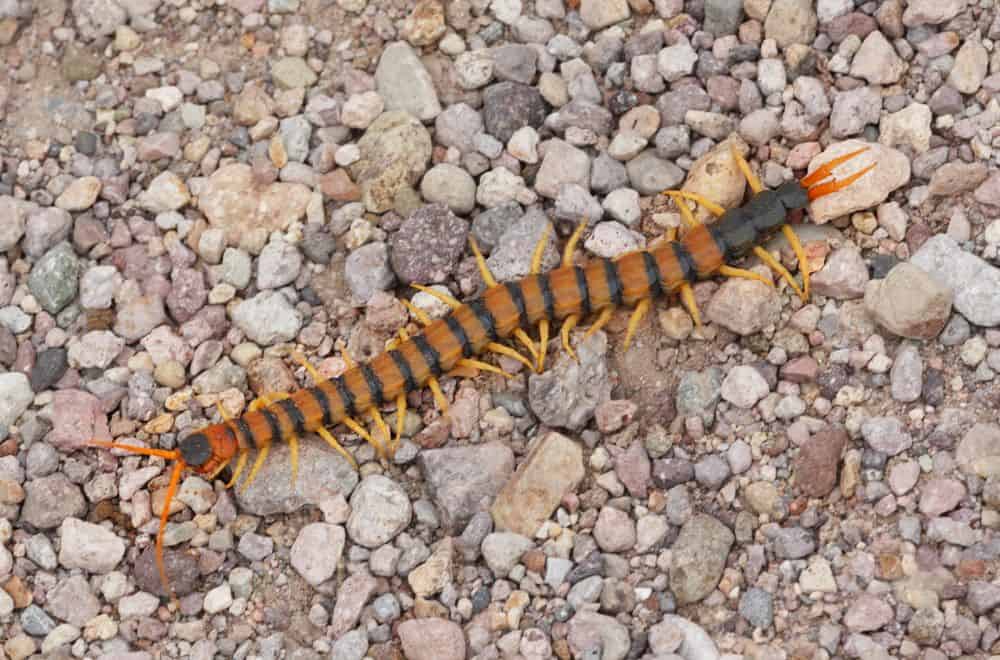
Another member of the notorious Scolopendra genus, Scolopendra heros – better known as the giant desert centipede – is another creature you really don’t want to be bitten by.
This species is found in southern parts of the United States as well as the northern part of Mexico, and at around a maximum of eight inches in length, it is comparable in size with Scolopendra subspinipes.
Although as its name suggests, it is commonly found in desert areas, this centipede also inhabits rocky woodland areas.
Like other giant centipedes, it preys on any small animals it can catch, including rodents, amphibians, reptiles and flying insects.
This centipede is never recorded as having killed a human, but its venom is similar in composition to other members of its genus, and its bites are known to be agonizingly painful.
As well as the pain, on occasion, bites from this centipede have been known to cause symptoms such as nausea, headache, localized skin necrosis, kidney failure and heart attack.
Fans of popular YouTuber Coyote Petersen will also be familiar with this species since this is the centipede Petersen allowed himself to be bitten by.
Although some people have suggested Petersen tends to “ham it up” a little when doing his bug bite videos, in the centipede video, the intensity of the bite’s pain does seem to take Petersen by surprise and he seems genuinely close to his limit.
You can check out the full video here to make up your mind.
5. Scolopendra morsitans
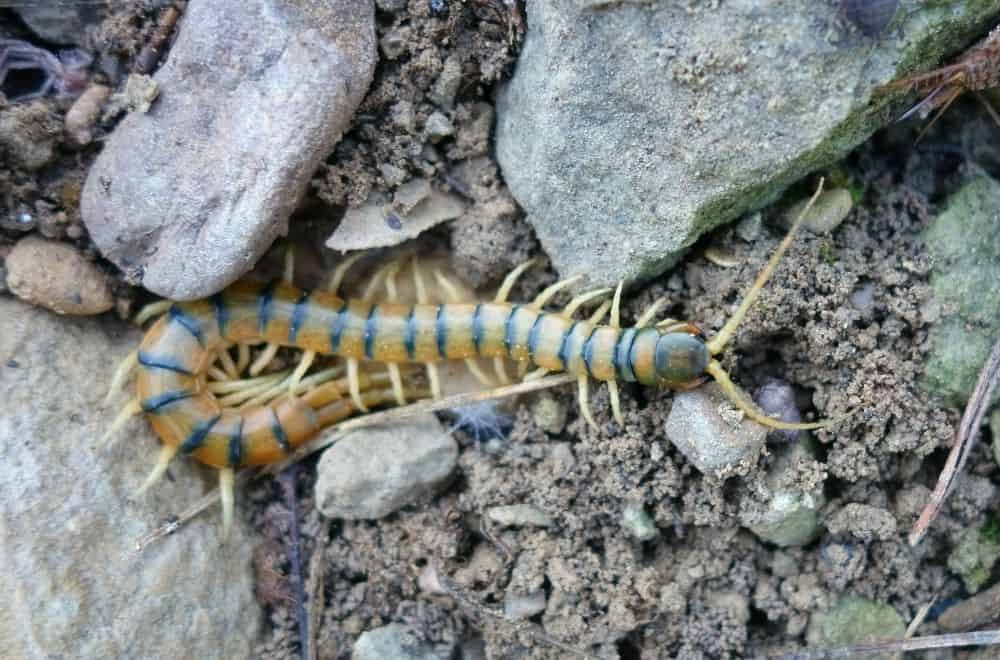
Although commonly referred to as the Tanzanian blue ringleg, this centipede is wide-ranging and is found from Australia through South and Southeast Asia right up into Europe. It is also present in the Americas where it is an introduced species.
This centipede carries neurotoxic venom that works by paralyzing its prey. The venom also causes the tissue of the prey to begin to break down, allowing the centipede to consume it more easily.
In the case of humans, the bite of this centipede is reported as being extremely painful, as is the case with other closely related species. However, no deaths have been reported.
6. Scolopendra alternans
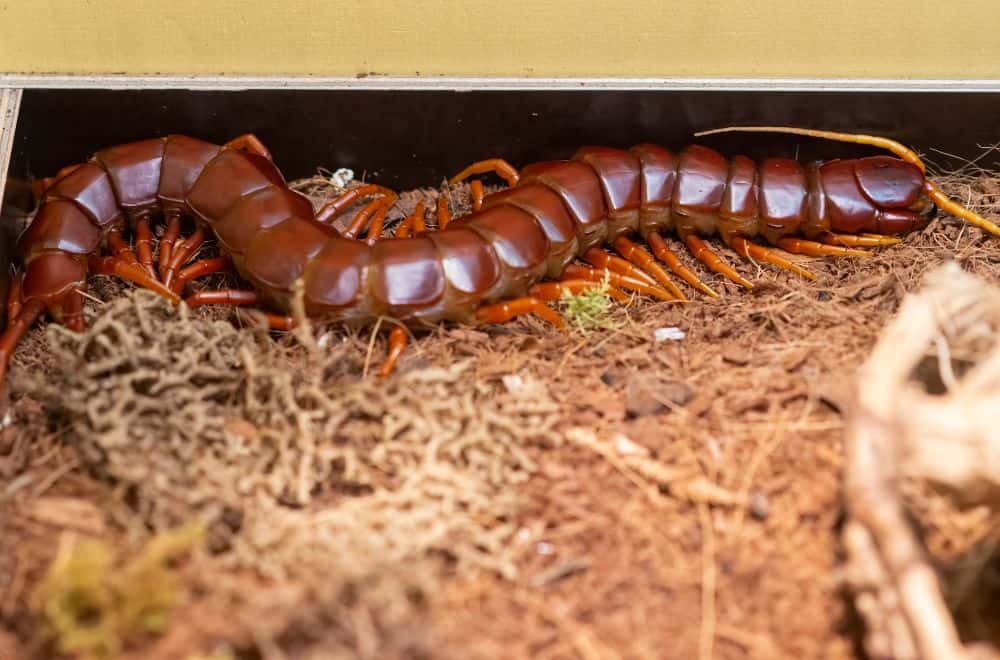
Also known as the Haitian giant centipede, the Caribbean giant centipede and the Florida Keys centipede, this is another brute you don’t want to be poking with bare fingers.
It is found in Puerto Rico, Cuba, Guadeloupe, Venezuela, the Bahamas, Hispaniola, the Antilles, the British Virgin Islands and Florida.
Growing to a length of around 7.5 inches, it possesses potent venom and a painful bite.
Although nobody has ever died from its bite, one of these centipedes famously killed a rare snake that was trying to eat it in Florida’s John Pennekamp Coral Reef State Park – although the centipede was also killed.
How to tell if you’ve been bitten by a centipede
If you are bitten by something without seeing what it is – perhaps while you are sleeping – how can you tell if it’s a centipede bite?
First, a centipede bite will show up as two separate puncture marks on the skin, one from each of the two forcipules the centipede uses to inject venom. In this respect, they look a bit like a spider bite.
Most centipede bites cause about the same amount of pain as a bee sting, but if you are in considerably more pain and you are staying in a place where larger, more dangerous centipedes are present, this could be the culprit.
However, if the pain is not strong, there is a chance you have simply been bitten by a common house centipede, in which case you don’t need to worry too much.
The most common symptoms of centipede bites include the following:
- Swelling
- Redness
- Itching
- Numbness
- Headache
- Nausea
- Fever
- Chills
- Weakness
What to do if you’re bitten by a centipede

If you’re bitten by a centipede, especially a big one, the first thing to do is to clean the wound. Wash the bite with soapy water or preferably an antiseptic solution.
If you have a venom extractor, you should use it – but unfortunately, most people who suffer a bite won’t have access to one. If you don’t have one, don’t try to “suck” the venom out with your mouth.
After this, the treatment is then concerned with reducing the pain as much as possible, which, if you are bitten by a larger species of centipede, can be significant.
Apply an ice pack to the wound and take whatever painkillers you have available.
However, if you have a history of allergic reactions to bee stings, you may be at risk of developing a similar – or stronger – reaction to a centipede bite, so you should see a doctor as soon as possible.
Even if you don’t have a history of allergic reactions to stings, if you begin suffering from fever or dizziness or have trouble breathing, you should seek medical attention immediately since centipede bites can cause some people to go into anaphylactic shock.
However, it’s important not to panic – since while they can be extremely painful, centipede bites are rarely fatal.
Fun facts
- No centipede species has exactly 100 legs
Although the word “centipede” means “one hundred legs”, no centipede has exactly that number. Instead, the number of legs they have ranges from 30 to 382, depending on the species.
- Centipedes are the only animals to possess forcipules
Centipedes inject venom by using “forcipules”, special legs that have evolved into “fangs”. They are the only animals that possess them.
- A centipede appears in the James Bond novel Dr No
In the James Bond movie Dr No, the eponymous villain’s henchman tries to kill Bond by placing a tarantula in his room.
However, in the original novel, the animal was a centipede, most likely a Scolopendra alternans.
FAQs
What’s the difference between a centipede and a millipede?
Centipedes and millipedes are closely related but aren’t the same. To tell them apart, look at each body segment – centipedes usually have one pair of legs per segment while millipedes have two.
Also, millipedes have legs underneath their bodies while centipedes have them on the sides.
Importantly, almost all centipedes are carnivores while few millipedes are – so centipedes are the ones to give a wide berth because they can bite!
Are centipedes dangerous to pets?
House centipedes are not dangerous to dogs and cats, even if pets might approach them out of curiosity.
However, if you see your pet playing with a large centipede like a giant desert centipede, you should remove them at once because they might receive a nasty – although probably not fatal – bite.
Give them a wide berth and watch where you put your fingers
Any of the centipedes we’ve mentioned here can cause huge amounts of pain when they bite you, so if you’re staying anywhere they’re known to live, you’ll need to be careful.
While you’re extremely unlikely to die from a centipede bite, being bitten by one is something you’ll never forget – and not for positive reasons – which makes it an experience most people would prefer to avoid.
